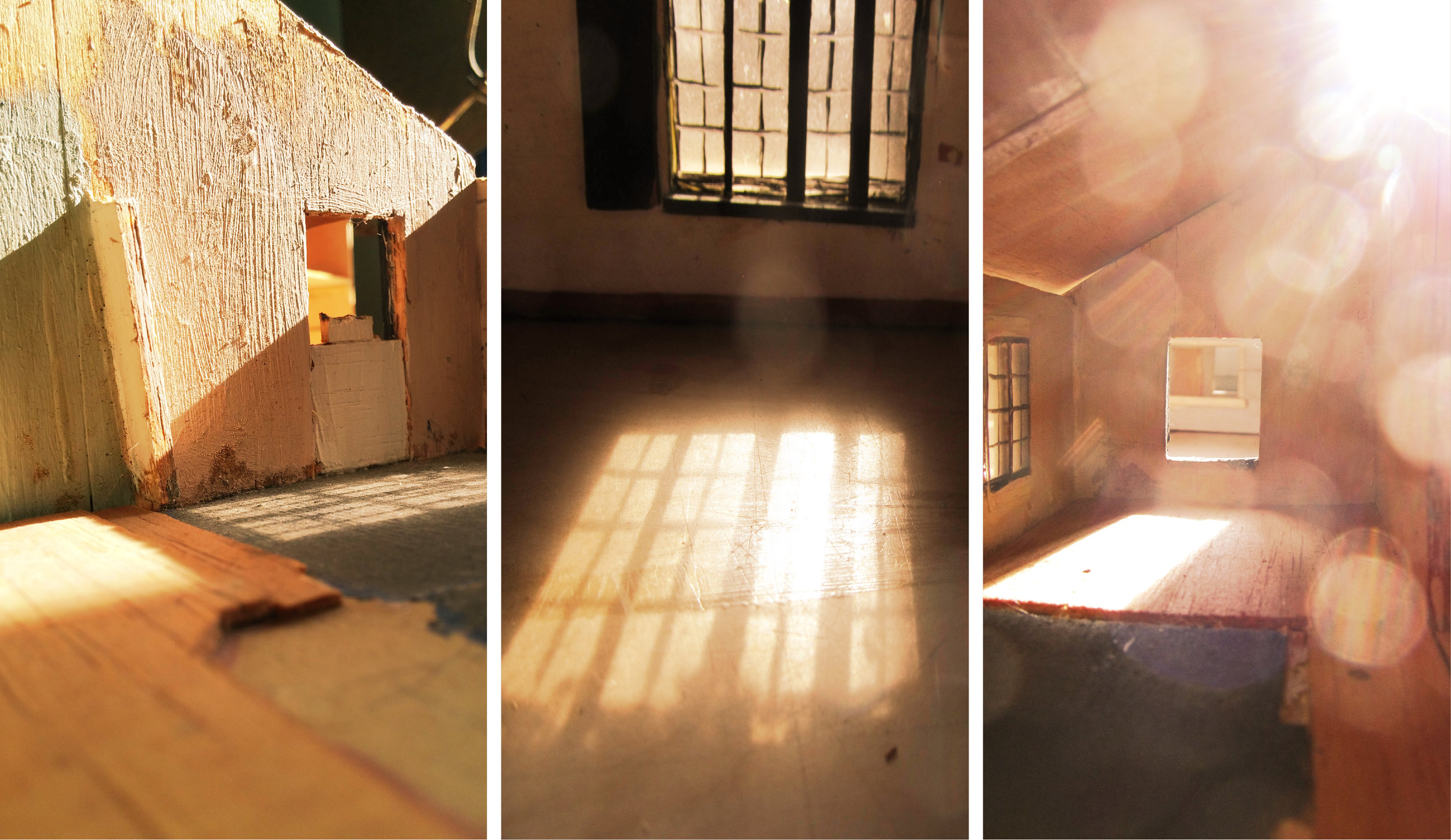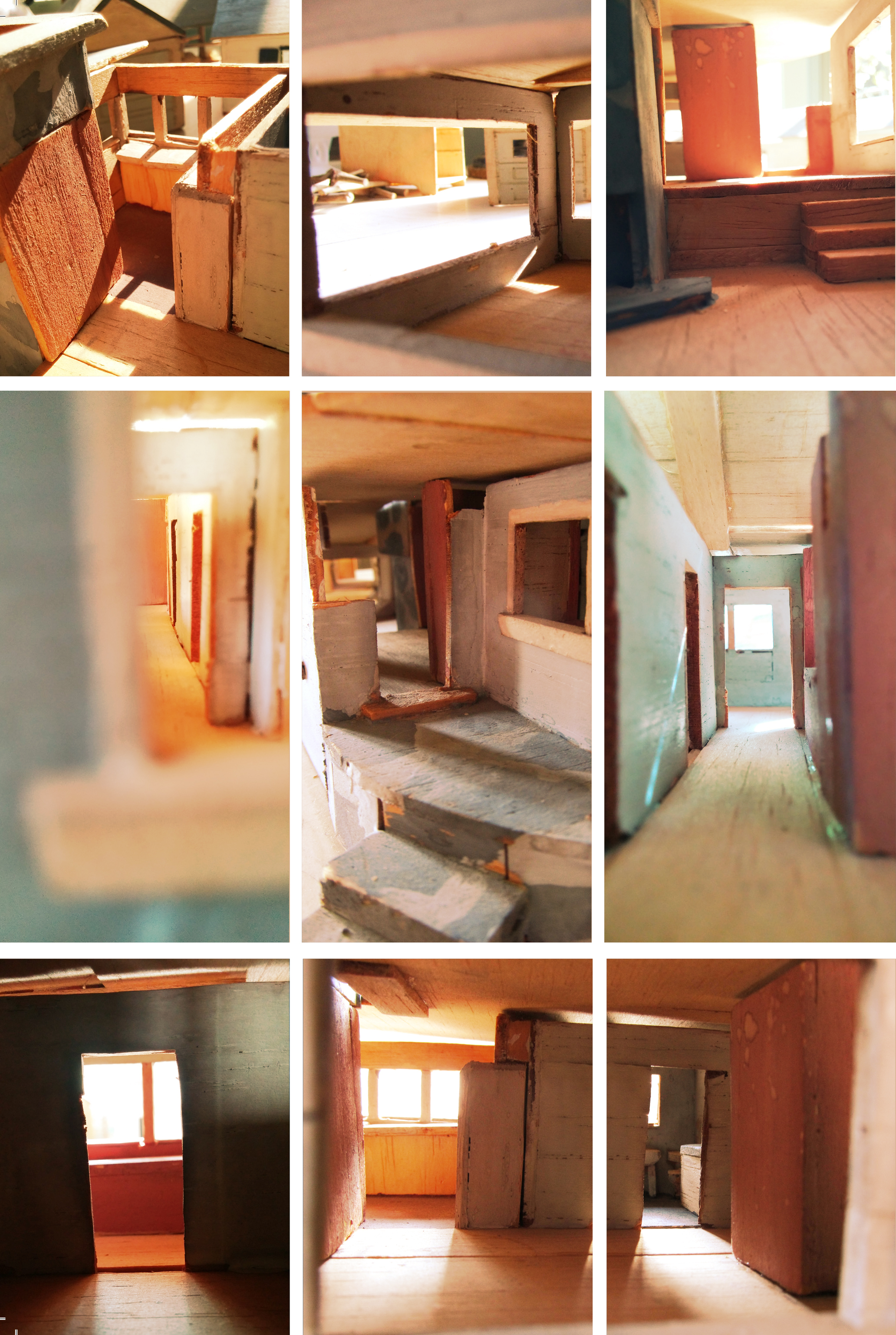Model Space
PLACING MEMORY
By Nancy Seaton
My Mother’s House is a collection of short stories by Colette, in which she describes the nuance of home life. Her observations of the small gestures, petty dramas, and fleeting phenomena of the domestic sphere create a more vivid sense of place than a grander telling. The memories of my own mother’s house are full of similar details, unforgettable smells such as horseradish in the blender, a bouquet of mock orange for the piano teacher, chrysanthemums, fresh hay in the field, and old hay in the barn—along with the stench of broccoli boiling on the stove for home canning.

Balsa wood models, circa 1965. Seaton Family estate.
These distinct, yet disjointed, memories are very much a part of my present experience in the same house as I organize its inheritance. Much of my time there is spent curating objects and ephemera, deciding what will remain a part of our family narrative and what will not. I inhabit the spaces of my childhood, now with the adult worry that my parents must have felt while I was exploring, creating, and playing, all the while reflecting on the lives and choices of my parents.
Philosophers, environmental psychologists, and cultural geographers often cite the everyday experiences of physical spaces as central to the creation of self-identity. Space and time structure narratives and memories, organizing movement and events into spatial frameworks—situating the things that happen in places. A mnemonic device developed in antiquity links ideas to physical space, placing them for instance, within the rooms of a house, in a precise order, for enhanced recall. While memories may have a physical context, they are not generally as fixed as they are in the memory palace. They are mutable over time, affected by new experiences and by other memories, in a never-ending cross-referencing of impressions.
Memory is affected by the way we perceive space, through episodic, fleeting images rather than as a coherent narrative. Spatial experience is fragmented and subjective, influenced by personal histories and sensory perception, the quality of light on a given day or the temperature. Temporal phenomena heighten memories of experience. Aristotle treats this connection in his essay On Memory and Reminiscence.
He defines memory as a perception and as a concept that has been conditioned by a lapse of time and belongs to the primary faculty of sense-perception.
During my efforts of organization, I found a portfolio stuffed with blueprints, drawings, collages, wallpaper swatches, lumber receipts, garden designs, kitchen layouts, and other precedent imagery for the design of an ideal home that my parents collected when planning to build their house. I also rediscovered two model houses that my mother made, before deciding on the plan that was constructed—one is a modest one story, and the other is a modern split-level. Both models are a little battered, showing the signs of age that include cracks and discoloration; walls are missing, a chimney has broken off and light enters through the seams. The fractured spaces remind me of Gordon Matta-Clark’s deconstructions and his series called Bronx Floors, 1972-1973, in which the worn surfaces, raw lumber, and means of assemblage are revealed through domestic archaeology. The pieces, removed from their context, become potent fragments that invite interpretation and association.
I documented each house with a series of photographs taken at different times of the day—my slim camera enabling views from within the model space. The images tread between reality and abstraction, depicting miniaturized spaces that can never be occupied and capture the surreal feeling of being in a space at once familiar and foreign, between states of the remembered, present, and idealized.

Balsa wood models, circa 1965. Seaton Family estate.
Corrected May 21, 2019. In Issue 08:HOME we misprinted the pull quote in the above article. It should have read “He defines memory as a perception and as a concept that has been conditioned by a lapse of time and belongs to the primary faculty of sense-perception.”